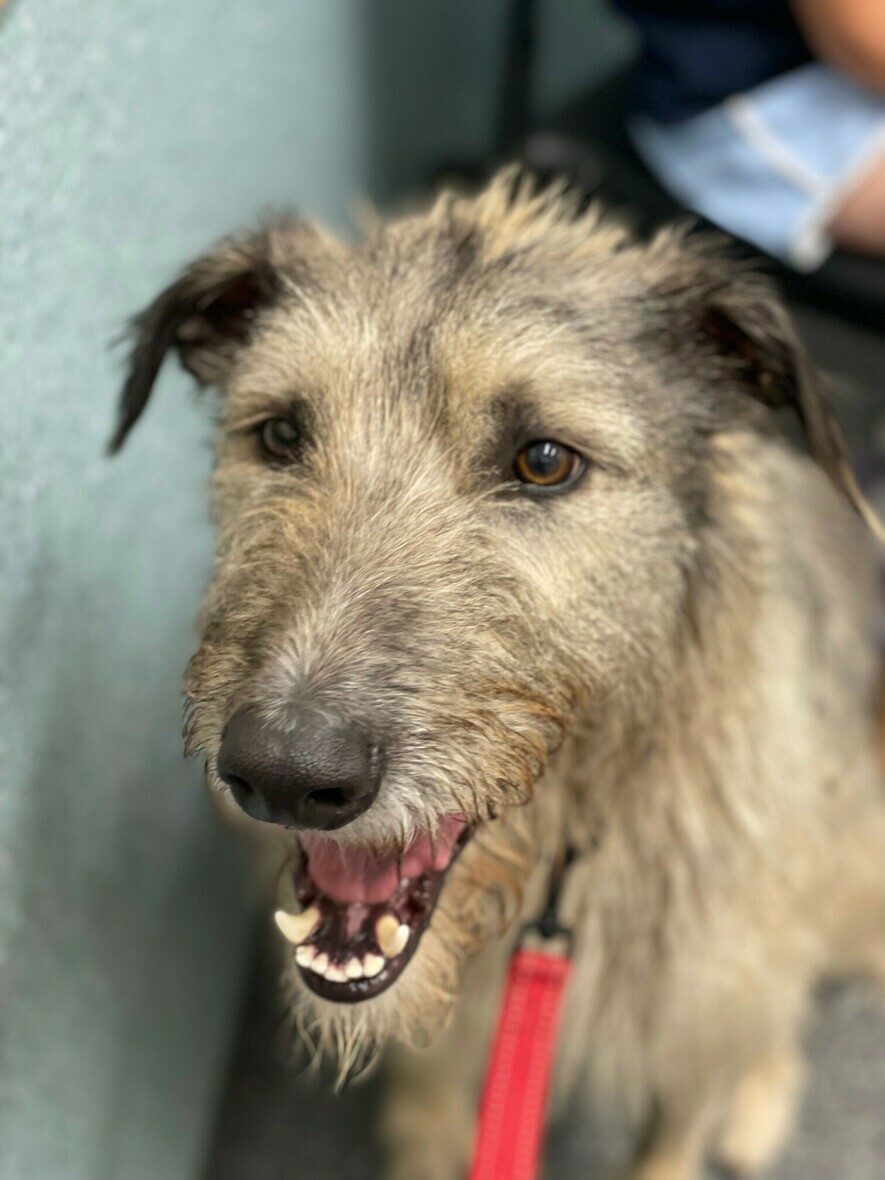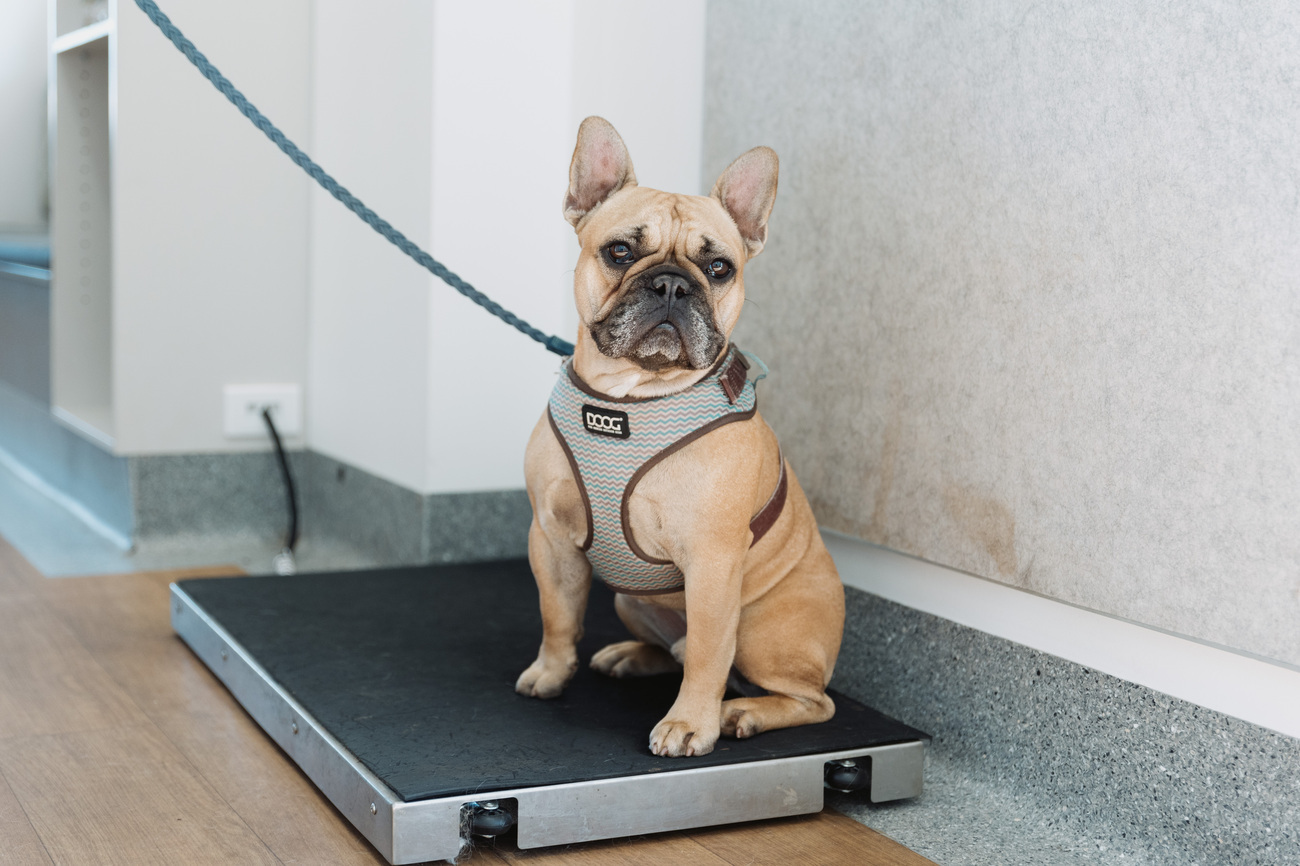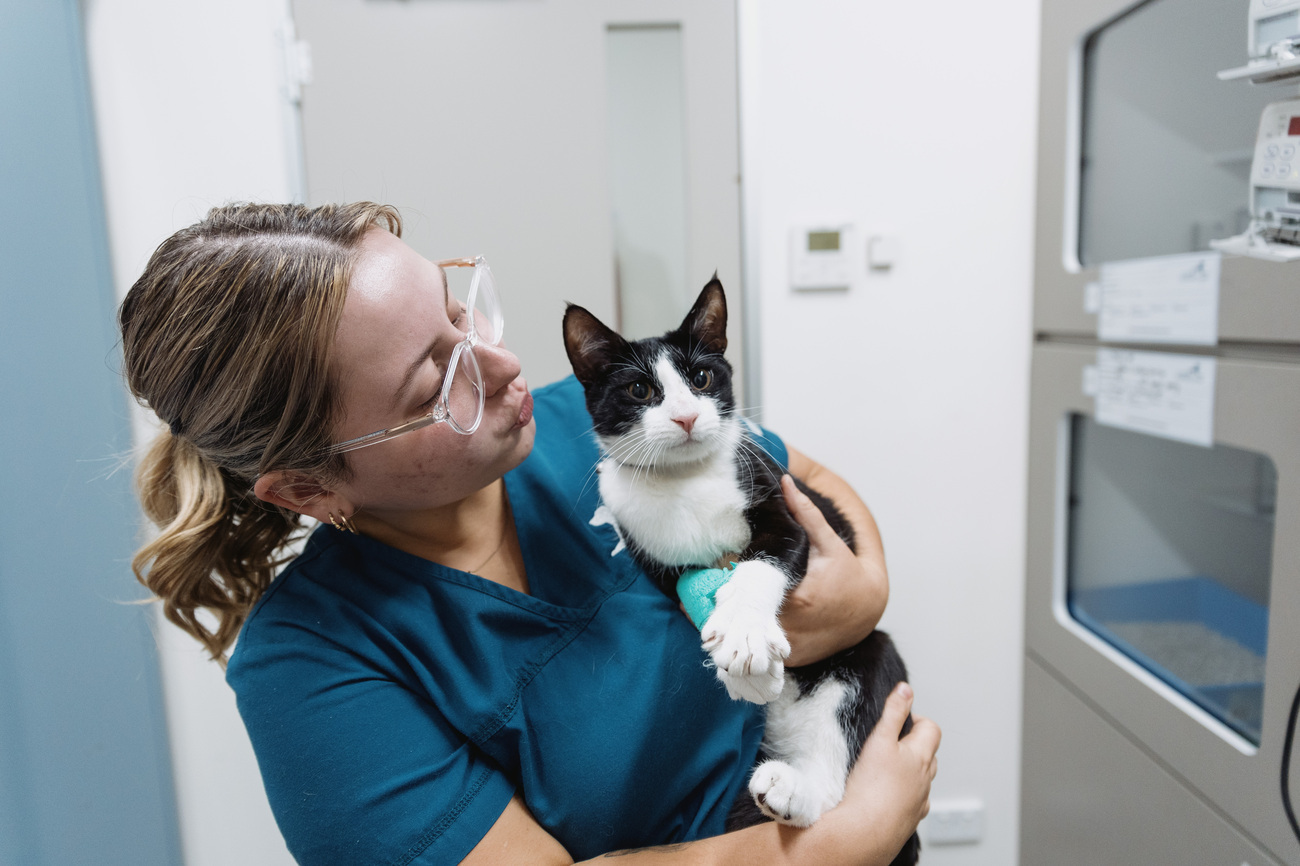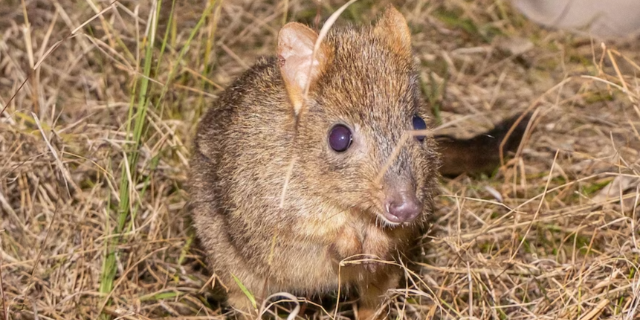
|
|
Your pet could save lives: seeking blood donor candidates.
|
| |
Blood donors are true heroes and without their blood in that moment of need, a life would be lost. We only ever collect blood from donors if it is needed, so rest assured your pet will only be called forward in a life or death situation. Canine blood has a short lifespan and fortunately here at Gawler Animal Hospital we do not need to perform transfusions often – hence why canine blood banks are not currently sustainable.
Why are blood transfusions used?
- For severe traumas where there is sudden blood loss
- Bleeding disorders
- Rat bait toxicity
- Blood loss during surgery
- Cancer
Do dogs have blood types?
Yes they do! In a case of a first time blood transfusion, there is no cross matching required. Although in cases where the recipient has had a previous transfusion, cross matching is performed prior to any donation as there is a higher risk of reactions. In some cases blood typing will be performed prior to the donation and transfusion.
What is the criteria to be a blood donor?
- Healthy
- Weighs at least 25kg, but not overweight
- Mesocephalic or dolichocephalic (meaning longer nose breeds, not bulldogs etc)
- Between 1-8 years of age
- Up-to-date with vaccinations, worming and other preventatives
- Has not received a blood transfusion previously
- Has a calm, trusting temperament
In most cases, the donor will be placed under a short anaesthetic to allow the donation to be collected without any stress. A dog can donate blood every 8 weeks if needed. We always consider the donors health as a first priority, a wellness check and blood test is performed prior to the donation and as always we maintain our high levels of fear free handling and care.
What happens next?
If you decide to consent to adding your dog to the blood donor list, you do not need to do anything else at this point. In a time of need, a member of our lovely customer care team will call you. We acknowledge that not everyone is available at a moments notice, hence why we love to have a list of donors to try. In the event a blood donor is required, we get in contact and then ask if you can bring your dog to the clinic.
Here, your pet may have to either wait on stand by at the clinic or be needed to donate straight away. A vet will examine your pet in hospital and ensure they are healthy and fit to be a donor on that day. An intravenous catheter is placed and blood collected for a wellness screen, if this is ok, the donation will go ahead.
The donation process usually takes about 10 mins. Your pet will be monitored closely while they recover with lots of love and cuddles from our team. When your pet is ready, we will call you to come and collect them. Overall, be prepared that your pet may need to stay several hours at the clinic
Following the donation, we recommend that your pet rests for the rest of day but should be able to return to normal activities the next day.
Our way of saying thankyou!
Along with the many cuddles and treats your pet would receive during their donation, we also would like to extend our gratitude further.
If we call you and your pet to be on stand by as a donor for an emergency, your pet will have a wellness blood test performed. This blood test checks the red blood cells, white bloods cells, platelets, renal and liver values, along with some other parameters.
If a donation is required, we will further reward with a gift voucher for your pets next health check and C5 vaccination.
Heroic Finn
Meet Finn, the handsome boy in the photo and one of our heroic donors.
Finn came into the clinic for a revisit after finishing some medications for an ear infection, when our team saw him as a perfect candidate to be a blood donor. We spoke to his mum about our blood donation program and she was more than happy to have Finn added to our blood donor candidate list.
That same day, our team had to perform an emergency Splenectomy. One of the major complications of splenectomy procedures is haemorrhage. Due to the high risk nature of the emergency procedure, our team reached for the blood donation list and Finn came back into the clinic for routine testing, so that he was ready to donate if required.
Luckily, Finn didn’t need to donate that day but having him there meant that another beloved pet had the absolute best chance of survival.
If you have any other questions or concerns regarding our blood donor process, or would like to add your dog to the list, please feel free to give our lovely customer care team a call on 8522 3500.
|
|
|

|
|
How to reduce bothersome barking?
|
| |
Whilst barking is a natural means of communication for dogs, too much yappy means no one's happy (sorry, we couldn't help ourselves!)
Here are our top tips to help reduce bothersome barking:
Work out why
Before we can start to work on your pet's excessive barking, it's important to pinpoint what triggers it.
Dogs may bark in excitement or as a guarding response to obvious visual or auditory stimuli (such as people or pets walking by your property, unfamiliar sounds, or possums in the trees at night). Dogs may also bark excessively due to other behavioural issues, such as anxiety or boredom.
Ensure your dog is exercising
Ensuring your dog is physically tired out and kept mentally occupied helps reduce boredom- or frustration-related barking and is also good for their general health.
We'd recommend daily walks/runs, and other “brain-game” activities such as treat-hunts, long-lasting chews, puzzle toys, Lick mats and snuffle mats.
Encourage calm
If your dog is barking in response to certain visual or auditory stimuli, blocking their access to these can help. Visual stimuli can be blocked with screening on fences or films on windows (which still allow light through), whilst sounds can be masked with soft-moderate background TV or radio noise.
It's also a great idea to teach your dog to be calm and quiet by consistently rewarding them for being so. This can be done by training your pet to go to a specific place (such as a bed or rug) and rewarding them when they are calm and not barking.
Don't punish the behaviour
Unfortunately, quick fixes like citronella collars or shouting at or otherwise punishing pets usually don't work in the long term and can worsen anxiety-related issues.
For recommendations on anti-anxiety therapy and positive method behaviour training, consult our behaviourally brainy-team! |
|
|

|
|
The dreaded nail trim
|
| |
Unfortunately, nail trim phobias in pets are reasonably common. They can result from a negative experience (such as a nail accidentally being cut too short previously) or may develop in naturally anxious pets or puppies who didn't receive adequate positive socialisation or handling experiences.
How can you help your pet that has nail trim phobia?
The most crucial first step is to avoid forcing your pet into a nail trim by overpowering them. Although this approach might seem effective initially, it often leads to increased fear and anxiety in your pet over time, making the problem worse.
If your pet urgently needs a nail trim, it’s usually best to book them for one or two nail trim procedures under sedation in the veterinary clinic to get their paws in a more comfortable state whilst starting long-term retraining therapies.
1. Mild cases
Milder cases of nail trim phobia can often be improved with a properly performed behaviour modification program. This will involve you retraining your pet’s brain through desensitisation and counterconditioning techniques so that they learn that nail clips are OK.
It's essential to take things slowly with short, positive daily training sessions over weeks to months so that your pet isn’t pushed too hard too soon. Here is a video (and accompanying description) demonstrating desensitisation and counterconditioning. Please remember that any pet can bite if they feel sufficiently threatened, so take care to avoid putting yourself or others at risk of a bite injury.
If you are feeling unsure about how to safely work with your pet, please consult us for recommendations on positive method trainers.
2. Moderate to severe cases
In more severe cases, we may need to prescribe short- or long-term calming medications for your pet, so that they can relax enough to respond well to behavioural modification.
We will also discuss potential alternative options that may help, such as using a Dremel or training your pet to use a scratch pad voluntarily.
For more behavioural assistance, consult our mental-health magnificent team! |
|
|

|
|
Tales of tail chasing
|
| |
If you’ve watched any funny animal video compilations, you may have giggled once or twice at footage of dogs chasing their own tails in a ridiculous fashion. But is this behaviour a harmless canine quirk, or does it represent a problem?
What is tail chasing?
Tail chasing is a behaviour mostly seen in dogs, involving the pet spinning in circles in apparent pursuit of their tail (which they may or may not actually catch and bite).
Why does a dog tail chase?
Some dogs chase their tail occasionally in play or excitement, particularly if they get a positive response from their owner (such as laughter) by doing so. This is considered reasonably normal, provided it occurs infrequently, and the pet can be distracted from the behaviour.
However, repetitive tail chasing can be a symptom of an underlying problem, such as:
- A behavioural issue, e.g. anxiety or an obsessive-compulsive disorder (OCD)
- Pain or discomfort around the pet’s back end, e.g. spinal pain, bottom or tail irritation, hip pain, abdominal pain, or skin irritation
In dogs with obsessive-compulsive disorders, the tail chasing tends to increase in severity and frequency over time, becoming increasingly difficult to distract from. Other symptoms, such as aggression, fear, or seizures, may occasionally accompany it.
What should I do if my pet tail chases?
Regardless of the underlying cause, early intervention is always best. If your dog is tail chasing frequently, we recommend a prompt check-up so we can examine them for any potential causes of back-end pain or discomfort. We may also suggest imaging (such as X-rays) to assess their joint health.
If your dog’s tail chasing appears to be OCD or anxiety-related, we can arrange a behavioural treatment plan for them, which may include:
- Avoiding any triggers for the tail-chasing behaviour
- Increased physical activity and mental stimulation
- Encouraging and rewarding calm behaviour, whilst ignoring tail chasing
- Medication to help calm your pet and support their retraining
- Treatment of any tail wounds
For more help with your pet’s behaviour, consult our experienced team. |
|
|

|
|
How to give your ninja cat medicine without the fuss
|
| |
We get it! Not every cat is cooperative with administering necessary medications, and they can be remarkably ninja-like and adept at using their natural defences. So here are our top tips for low-stress tabletting of tricky cats.
1. Bribes
A spoonful of sugar sure does help the medicine go down, and we fully support using cat-friendly treats to assist in their tabletting experience!
Here are some options to try:
- Butter: many cats love the taste of butter, so coating your cat's tablet or capsule in a little softened butter can help it to slide more easily down their throat, with a pleasant aftertaste
- Feline treats: some owners find it best to quickly administer their cat's medicine and then immediately offer their cat some compensation in the form of their favourite snack
- Lick-treats: liquid treat pouches can be great for hiding small tablets in. If your cat is food-motivated enough, they may just lick up a tablet hidden near the surface of the treat
2. Restraint
If your cat is an unwilling participant for their medical experience, we'd recommend gentle restraint in the form of a calming blanket wrap. Here's how. Don't forget to reward them with a tasty treat after. |
|
|
| |
|
|
| |
3. Correct technique
To pop pills down your cat's throat, carefully hold them around their top jaw/cheekbones and lift their nose up to the ceiling. This will allow you to open their lower jaw with your middle finger, and then drop tablets right to the back of their throat using your index finger and thumb (or a finger-saving “Pill popper” device).
It's a good idea to follow tablet administration with a trickle of water into the side of your cat's closed mouth (using a syringe), to help them to swallow the medication. |
|
| |
|
|
|
|
4. Enlisting help
If you're still struggling, please ask us our friendly team for further assistance. |
|
|

|
|
Brush-tailed bettongs thrive amid Pilliga's challenges
|
| |
In a heartening conservation success, the brush-tailed bettongs' numbers in the Pilliga State Forest have more than doubled, thanks to the Australian Wildlife Conservancy's (AWC) reintroduction efforts. Starting with 55 individuals in September 2022, the population has impressively grown, overcoming initial environmental challenges.
Reflecting on the project's early days, Dr Vicki Stokes, a senior wildlife ecologist at the AWC, shared, "Within two to three months of [the animals] being released, we had two floods in the Pilliga. They had to survive some pretty extreme conditions… we did lose a couple of individuals due to the flooding." Despite these setbacks, including a close call with bushfires, the bettongs have flourished, symbolising resilience.
The expansion of their habitat from 680 to 5,800 hectares is a testament to their thriving numbers. Dr Stokes adds, "Every time we trap them, we've got very healthy males and females. We usually have 70 percent or more of our females that have pouched young," highlighting the success of the conservation efforts.
Looking forward, Dr Stokes emphasised the importance of addressing threats from invasive species, stating, "For any regionally extinct species to survive beyond the fence, it would be crucial to get fox and cat control effectively happening." This underscores the ongoing challenges in conservation work and the critical steps needed to ensure the bettongs' continued success in their natural habitat.
Click here to read the ABC's full story.
Photo credit: Australian Wildlife Conservancy |
|
|

|
|
How can you help your anxious pet?
|
| |
Anxiety is being increasingly recognised in pets, with up to 20% of dogs believed to have an anxiety problem. Anxiety may be situation-specific (e.g. triggered by thunderstorms or unfamiliar visitors) or more generalised.
If you think your pet might be affected by anxiety, try not to worry - there's a lot that you can do to help them! Read on for tips on how you can support your pet and how we can help.
1. Learn how to recognise symptoms of stress or anxiety in your pet
Being able to recognise symptoms of stress or anxiety in your pet means you can start taking note of situations that are likely to trigger them.
Anxiety in pets can manifest as a fight, flight or freeze response. Click the links to identify some of these body language signals in dogs and cats.
2. Minimise stress
It's important to offer your pet a safe zone at home, which includes a door so that they can feel enclosed and protected even if guests are around. The safe zone can be a crate or room with dim lighting, a comfortable bed, and soft background noise to block out external sounds. Create positive associations with the space by regularly offering your pet special treats or toys there.
3. Support your pet's general health
It's important to give your pet a regular healthy outlet for their physical energy with breed-appropriate daily exercise. Try to follow this up with relaxing “brain games” - this may involve using Lick-Mats, puzzle toys, scented treat hunts, or chew treats that keep your pet occupied and calm.
4. Seek veterinary assistance
If your pet's anxiety is regularly hurting their quality of life (or yours!), it is recommended that you seek help from our experienced vets. This may involve the use of short- or long-term anti-anxiety supplements or medications, and a behavioural modification plan to build your pet's confidence.
With the right treatment plan, we'll have everyone living their best life in no time! |
|
|
This email contains comments of a general nature only and is not intended to be a substitute for professional veterinary advice. It should not be relied on as the basis for whether you do or don't do anything.
All content © PetPack 2024 |
|
|
[Footer]
|